Microgreens have been growing in popularity due to their impressive nutritional profile and versality in the kitchen. Often sought out by high-end chefs to enhance the visual appeal of dishes, these little green confetti are way more than a cute garnish!
What are they?
Microgreens are the young, tender greens harvested at the cotyledon stage when the first 1-2 true leaves have emerged. They are treasured for their vibrant color, crisp and tender texture, concentrated flavor and nutrient density.
#Microgreens are treasured for their vibrant color, crisp + tender texture, concentrated flavor and nutrient density. Learn about these small but mighty greens. #saslife Click To TweetMicrogreens vs. Sprouts
Before we dive too deep into microgreens, I want to clear up a common question: Are microgreens and sprouts the same thing? No, they are not. Each represents a slightly different stage of a plant’s development and has its own cultivation methods, growth time and culinary uses. Check out the guide below for an overview of what makes microgreens and sprouts unique (more details here).
Small but Mighty
Despite their diminutive size, microgreens are packed with nutrition, containing 4 to 40 times more antioxidants and vitamins per gram than their mature counterparts.
Exact nutrient values vary and studies on exact nutrient content are limited, but in general, microgreens are good sources of fiber, vitamins A, C, E and K as well as minerals like iron, zinc, potassium, calcium and magnesium. Not to mention a host of powerful phytonutrients like carotenoids, anthocyanins and glucosinolates. All of which combine forces to provide anti-inflammatory, antioxidant, disease-preventing health benefits. Small, but mighty for sure!
Selecting and Storing
Microgreens are available year-round. They can be found at some grocery stores as well as local farmer’s markets and farm stands. You can also easily grow them at home for a fraction of the cost with some seeds, soil, water and a little light.
Since microgreens are delicate, reach for ones that are bright in color and look fresh and crisp. Then choose the variety based on the foods and flavors you enjoy. For example, if you like radishes, try radish microgreens which are spicy like a mature radish, just in tiny leaf form.
Store microgreens in the produce drawer of the refrigerator in a sealable bag or container for up to 7-10 days. Add a paper towel to remove excess moisture and maximize shelf-life.
When you’re ready to serve your microgreens, grab them from the fridge and give them a light rinse in cold water. Do not wash them in advance!
4 Common Microgreens
Microgreens can be grown from almost any vegetable, herb, grain or grass seed – anything from chives and garlic to wheatgrass and sunflowers. Below are some of the most common microgreens with details on their flavor, culinary uses and nutritional superpowers.
BROCCOLI
Broccoli microgreens have a mild, slightly peppery flavor. They pair well with omelets, stir-fries, green smoothies, salads, sandwiches and wraps.
Research has shown that broccoli microgreens contain higher concentrations of certain nutrients than mature broccoli (which means double the health-boosting effects!). They also require 158-236 times less water than the nutritionally equivalent amount of mature broccoli. Sustainable and tasty!
KALE
Kale microgreens have a mild, earthy flavor – sometimes described as tasting like romaine or leaf lettuce – with a much more tender texture than the full-grown variety. They pair well with salads, sandwiches, grain bowls, casseroles, smoothies, pasta and pizza.
Studies have found that kale microgreens are rich in phenolic compounds, carotenoid antioxidants and glucosinolates which can help protect against cancer.
PEA
Pea microgreens, or pea shoots, have a sweet, familiar pea flavor with a delightfully crunchy texture. They pair well with salads, wraps, sandwiches, pasta and pizza and are delicious sautéed.
Thanks to the carotenoids (most namely beta-carotene and lutein) pea microgreens contain, they support eye health and help prevent several chronic diseases.
RADISH
Radish microgreens have a bold, spicy, peppery flavor with a tender, crisp texture. They pair well with salads, sandwiches, tacos, grain bowls, soups, sushi rolls and cooked meats and vegetables, providing a pop of heat and depth of flavor to dishes.
According to a study assessing nutrient quality score of various microgreens, radish was found to be the most nutrient dense in the bunch.
Serving Them Up
Microgreens generally taste like a concentrated version of their mature plant so can be mild, peppery, spicy or sweet. They can be eaten raw or cooked and can easily be added to just about any breakfast, lunch or dinner dish.
Here are some ideas on how to incorporate microgreens into your meals:
- Mix into scrambled eggs or omelets (see recipe below).
- Toss into a salad.
- Sprinkle on top of grilled meat, fish or other proteins.
- Stir into soups, pastas, stir-fries or casseroles.
- Blend into a smoothie.
- Sauté with a little oil, garlic, salt and pepper (see recipe below).
- Add to sandwiches, wraps or pizza.
- Garnish hummus, guacamole or other dips.
If you haven’t tried microgreens yet, do so now! These little green confetti will not disappoint!
Microgreens Frittata
Makes 1 serving
PRINT RECIPE
Ingredients
2 eggs
2 tsp milk
2 Tbsp shredded or crumbled cheese, divided
¼ - ½ cup microgreens (I used kale + broccoli)
2 Tbsp chopped mushrooms
salt and pepper, to taste
Directions
- Pre-heat air fryer to 375F.
- Grease ramekin or oven-safe container.
- Whisk eggs, milk and 1 Tbsp cheese in greased container.
- Stir in microgreens, mushrooms, salt and pepper.
- Top with remaining 1 Tbsp cheese.
- Bake in air fryer for 8-10 minutes or until puffed and brown.
Notes
- You can also make this in a regular oven. It may take a little longer to cook through, closer to 15 minutes, but check it after 10 minutes.
- If you’d like to make this in a bigger batch, you can use a muffin tin or a 9-10 inch baking dish. Be sure to adjust the cooking time accordingly and store leftovers in the fridge for reheating.
Sautéed Pea Microgreens
Makes 1-2 servings
PRINT RECIPE
Ingredients
2 cups pea microgreens
1 Tbsp avocado oil
2 tsp minced garlic
salt and pepper, to taste
Directions
- Add avocado oil to a skillet and heat over medium heat.
- Add garlic and cook for 1-2 minutes.
- Add pea microgreens and toss until wilted, about 1-2 more minutes.
- Season to taste with salt and pepper.
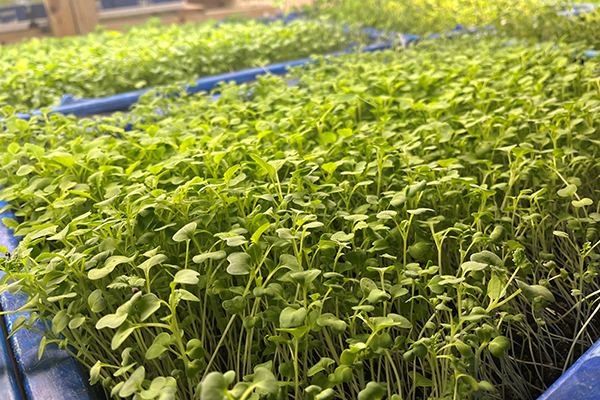
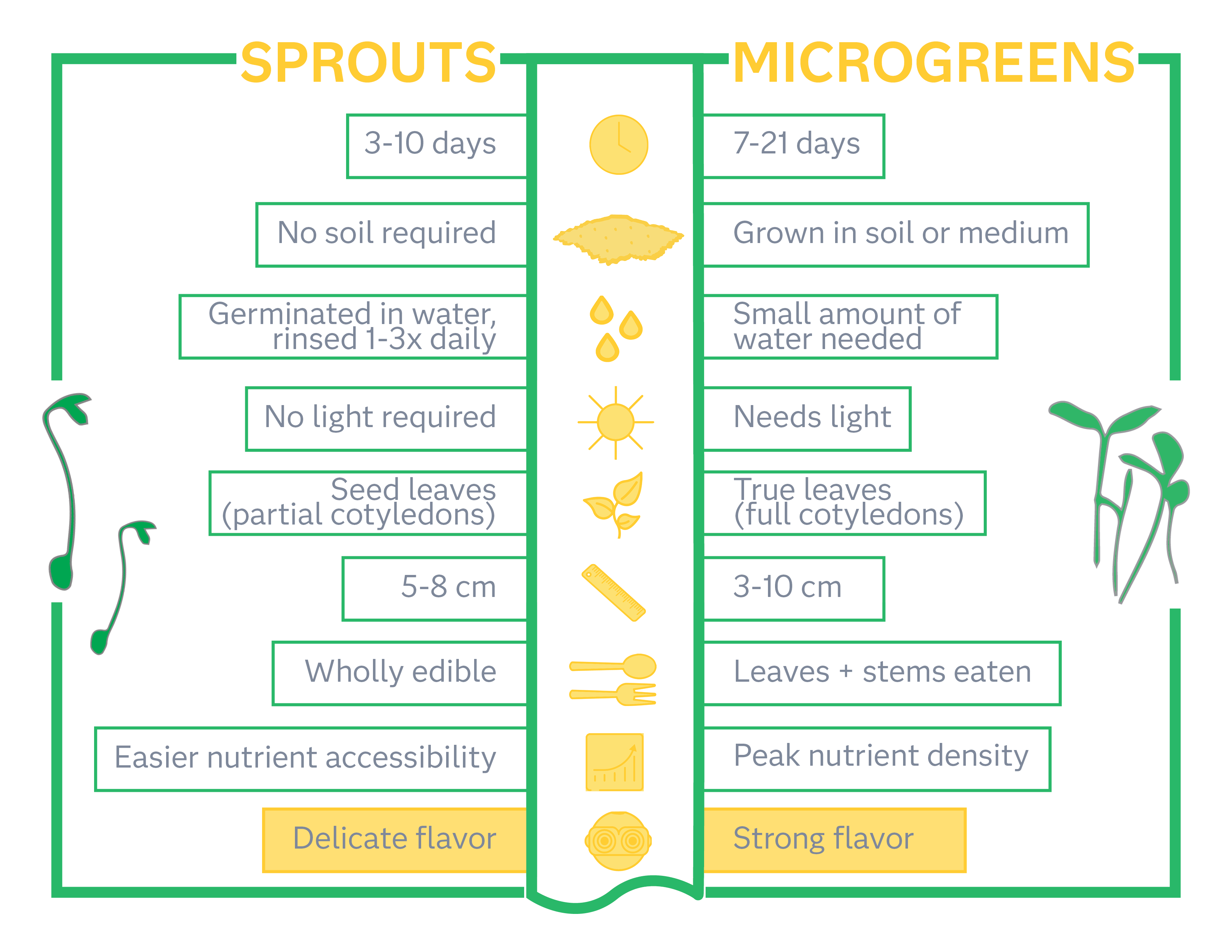
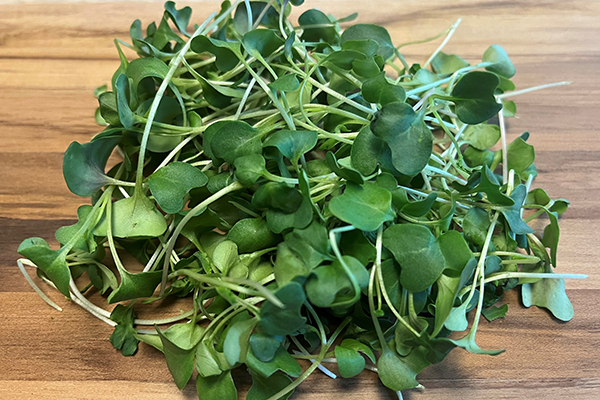
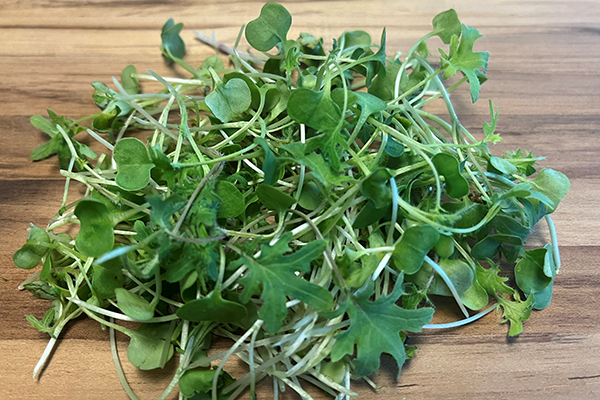
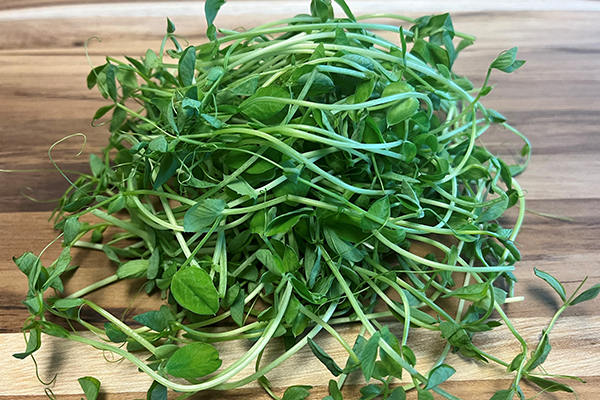
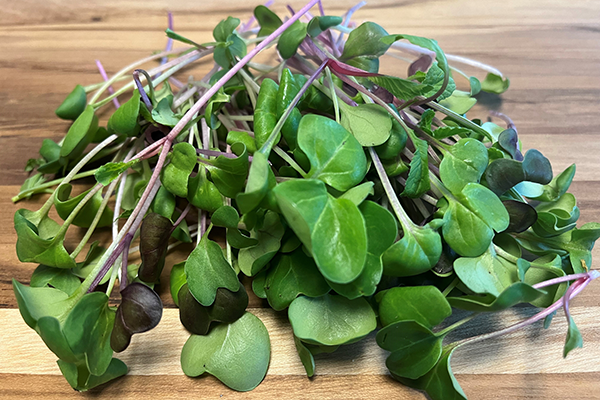
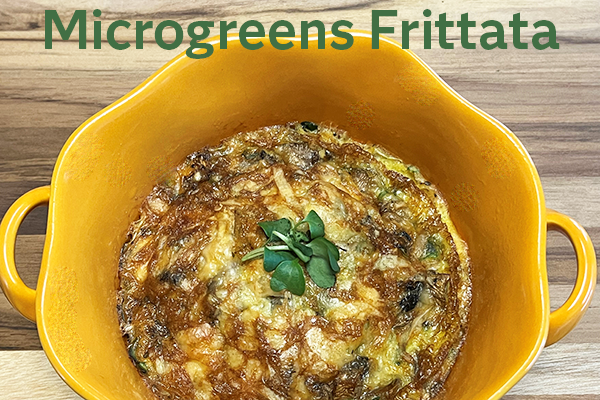
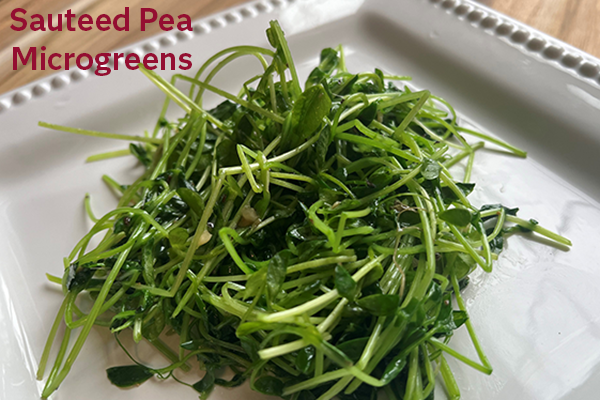

2 Comments
Great article! Ironically, I heard about microgreens recently while watching an episode of Bob's Burgers! I'm curious since microgreens are the early seedlings of the actual vegetable you're planting, do you "lose" the vegetable if you harvest the microgreens?
Great question, Lisa. I'm no gardener but yes, the mature vegetable would not ever develop since these are harvested early. I'm sure most wouldn't be able to grow to maturity anyways given the growing conditions.